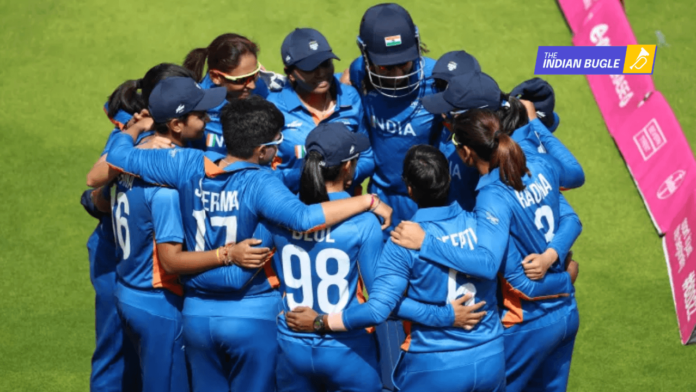The ICC Women’s Cricket World Cup is the premier 50-over international tournament in women’s cricket. The 2025 World Cup is being hosted in India and features the world’s top teams in a round-robin format followed by knockout matches. It is the biggest stage in women’s white-ball cricket and plays a central role in growing the sport and spotlighting top talent.
Quick headline facts
- Host: India (with matches across multiple cities).
- Captain: Harmanpreet Kaur; Vice-captain: Smriti Mandhana.
- Format: Round-robin group stage followed by semi-finals and a final.
- Squad announcement: The national board selects and announces the final 15-player squads ahead of the tournament.
India’s 2025 World Cup squad (concise list)
Harmanpreet Kaur (c), Smriti Mandhana (vc), Jemimah Rodrigues, Deepti Sharma, Harleen Deol, Richa Ghosh, Renuka Singh Thakur, Amanjot Kaur, Pratika Rawal, Yastika Bhatia (and supporting players such as Uma Chetry and others, depending on the final announcement and last-minute changes). The final playing XI will be decided match by match based on conditions and opposition.
The recent Asia Cup stirred strong debate and heated discussion across cricketing circles. Several issues — including venue choices, scheduling clashes, and differing positions among boards and stakeholders — fed into a controversy that dominated headlines for weeks. For teams and players, controversy like this brings two kinds of impact:
- Distraction vs motivation: Off-field disputes create noise that can disrupt preparation, but experienced teams often use such noise to sharpen focus and turn controversy into a motivating narrative.
- Scheduling and rhythm: Changes or uncertainty over fixtures can affect players’ match rhythm, rest plans, and travel logistics — all of which matter in a tightly packed international calendar.
For the Indian side, the Asia Cup episode tested squad management, media handling, and mental strength. How the team navigated that controversy revealed lessons about leadership, communication, and the importance of internal unity when external issues swirl.
Team strengths — why India can go far
- Balanced batting core with experienced stars: The top and middle order combine elegance and power, giving India the ability to build long innings and accelerate in later overs.
- Leadership & big-game experience: The captain brings leadership experience and the ability to anchor or finish innings when needed. This steadies the side in tense situations.
- Spin and all-round depth: India’s spin options plus batting all-rounders provide control in the middle overs and batting depth lower down the order.
- Bowling firepower in patches: The seamers can provide breakthroughs and wicket-taking options, while spinners often control run flow at key stages.
- Home advantage: Familiar conditions and large home crowds help players settle quickly and can create pressure for visiting teams unaccustomed to subcontinental pitches.
Team vulnerabilities — what India must fix
- Inconsistency under knockout pressure: Historically, India has produced brilliant wins but sometimes struggled to maintain the same consistency in knockout matches; managing nerves and game plans is crucial.
- Pace bowling depth on fast surfaces: Against very quick and bouncy attacks, the seam attack needs consistent lengths and plans to remain effective.
- Middle-order balance: Finding the ideal mix of finishers and consolidators in the middle order is key—too much aggression can lead to collapses, too much caution can slow run scoring.
Selection stability & fitness: Last-minute changes due to injury or form can upset combinations; fitness and a clear backup plan are essential.
How India can convert strengths into wins — tactical checklist
- Exploit spin early: Use batters who read spin well to capitalize on home conditions.
- Rotate bowlers smartly: Mix pace and spin to keep batters unsettled.
- Leverage bench depth: Rotate players based on form and match-ups, using domestic performances to inform selection.
- Plan match-ups: Identify opposition weaknesses and use specific bowlers/batters to exploit them.
The Indian women’s team enters the World Cup with a potent blend of experience, talent, and home advantage — and with it, the real chance to turn pressure into triumph. The recent Asia Cup controversy tested their focus, but it also offered a rallying moment: when leadership, preparation, and unity hold firm, off-field noise can become fuel rather than a diversion. On the field, the team’s balanced batting core, smart spin options, and match-winning leaders give India multiple paths to victory; the challenges — pace depth, middle-order clarity, and knockout temperament — are solvable with careful rotation, tactical match-ups, and mental conditioning.
If the Women in Blue can convert domestic form into tournament confidence, tighten the fielding and running game, and back young players to play fearless cricket, they can recreate the breakthrough moments that define champions. Ultimately, World Cups are won session by session — one disciplined performance, one smart bowl change, one clutch boundary at a time. For fans and pundits alike, the 2025 campaign is a chance to watch a team that can inspire a generation and, quite possibly, repeat history.
Stay tuned for match-by-match analysis, lineup updates and on-ground coverage as the tournament unfolds.
